Did you know that construction equipment leasing in Saudi Arabia is on the brink of a transformation that could save businesses millions? What insiders whisper can be the ultimate game-changer in this booming sector.
In a world where financial flexibility is paramount, understanding the landscape of equipment leasing in Saudi Arabia is essential. The potential cost savings and strategic advantages have never been more crucial than they are today.
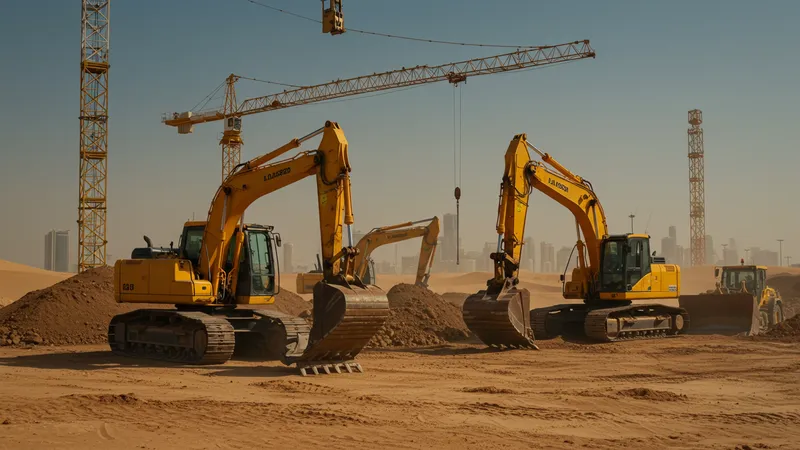
Surprisingly, many companies continue to purchase construction equipment upfront, sinking vast resources into assets that quickly depreciate. Yet, the shift towards leasing is presenting an innovative and smarter alternative, shaking up traditional practices all across the country. But that’s not even the wildest part…
Beneath the surface, there swirls an untold story of how leasing not only addresses capital needs but also drastically cuts downtime with cutting-edge maintenance guarantees. Companies are beginning to experience a newfound efficiency, with some reporting operational cost reductions by up to 20%. But this just scratches the surface of this untapped potential…
As the narrative unfolds, what lies ahead will leave even industry veterans at a loss for words. Prepare to rethink everything you knew about equipment leasing. What happens next shocked even the experts…
Diving deeper into the topic reveals how companies in the kingdom are witnessing astonishing cost savings by opting for leasing over purchasing. Leases allow businesses to allocate finances for other critical operations, rather than tying up capital in heavy machinery. In fact, many have found that leasing facilitates better cash flow and budget management, revolutionizing financial strategies.
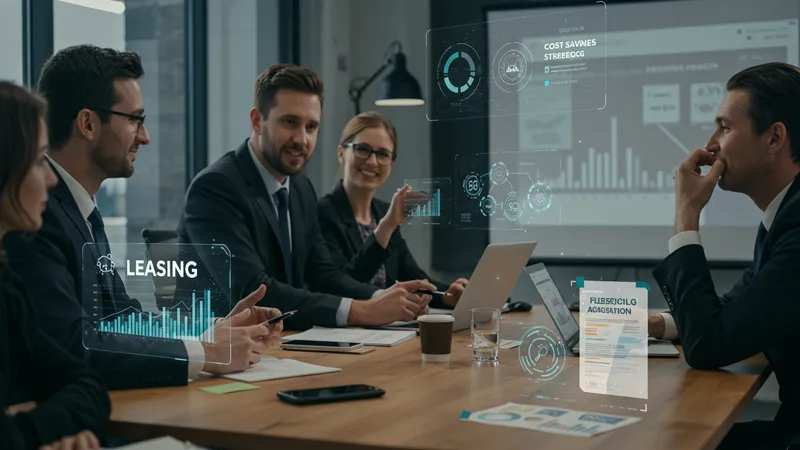
Another key advantage is the elimination of repair and maintenance headaches. Lease agreements often include comprehensive support services and maintenance packages, letting companies focus on their core operations without the burden of unforeseen repair costs. But there’s one more twist: surprisingly, the flexibility of equipment leasing has enabled firms to adapt swiftly to project demands, scaling up or down as required.
Additionally, choosing to lease gives businesses access to the latest technology without the huge upfront costs. This is particularly crucial in an industry where efficiency and innovation can define success. Continuous upgrades ensure that companies stay ahead of the curve, enhancing productivity and safety onsite. Still, there’s another layer to this story…
Despite these clear benefits, not everyone is convinced. Some remain skeptical about the perceived constraints of leasing contracts, worried about long-term commitment repercussions. However, when dissected, the fear often stems from misinformation rather than experience. What you read next might change how you see this forever.
There's another compelling reason driving the shift towards equipment leasing—its environmental benefits. By leasing, less equipment stands idle, reducing the carbon footprint associated with manufacture and maintenance. Leasing companies often cycle their equipment to ensure optimal efficiency is maintained, minimizing waste and energy use.

Many leasing agreements include eco-friendly compliance features, ensuring that companies use machinery that meets or exceeds current environmental standards. This not only helps in reducing emissions but also places companies at an advantage in winning contracts with an increasing emphasis on green construction practices. But the benefits don’t stop there; leases also propel businesses into the future of sustainable engineering.
Given Saudi Arabia's Vision 2030 plan, focusing on sustainable development, companies that choose leasing can seamlessly align with national environmental objectives. Firms engaging in leasing are often seen as forward-thinkers in the industry, gaining not just economic advantages but also boosting their corporate reputation. And there's yet another angle to consider…
In the long run, focusing on sustainability can translate into significant financial savings. Businesses regularly adopting such practices are discovering new funding avenues and incentives for green initiatives. It’s becoming increasingly evident that leasing is much more than just an economic decision—it shapes the future sustainability ethos. Here’s how this changes everything you've considered about your ventures so far…
Flexibility in operations has become the pulse of competitive advantage, especially in today's dynamic market. Leasing construction equipment provides precisely that, allowing companies to select from a wide range of machinery suited to their project-specific needs. This flexibility means they aren't locked into owning equipment that may only be useful periodically, and it allows them to pivot swiftly when project specifications change.
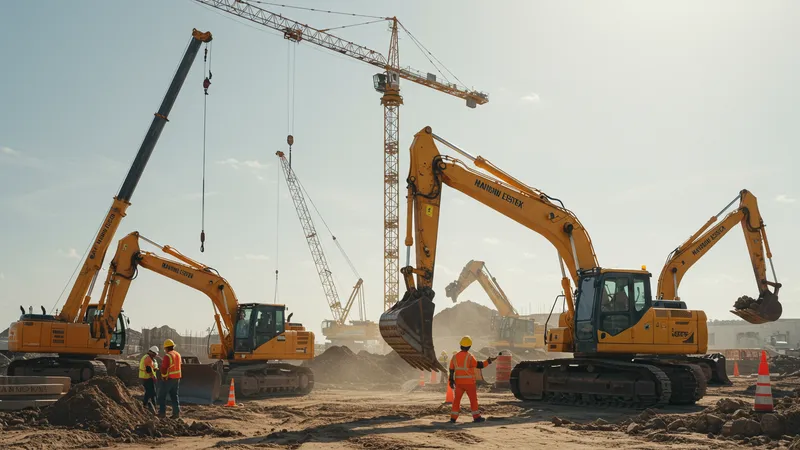
Furthermore, leasing contracts offer tailored solutions that can be adjusted to match project timelines and budgets. The ability to mix and match equipment ensures that operative efficiency is maximized, a factor that has become crucial as project deadlines tighten across the industry landscape. But crucially, leasing also lets companies invest in their workforce.
The capital saved from leasing instead of buying equipment can be redirected towards training and upskilling employees, ultimately enhancing the company's core capabilities. Investing in human resources paves the way for long-term sustainability and growth, outpacing equipment investments that depreciate over time. But the ripple effect doesn’t end there…
Flexibility via leasing serves an additional strategic purpose: it equips businesses to tackle unforeseen challenges head-on. Whether it’s fluctuating market demands or evolving project scopes, the ability to adapt without major financial distress is pivotal. The next phase will unravel just how crucial this adaptability is for survival in a swiftly changing world. What you’ll discover could reshape your entire approach.
One of the least-discussed benefits of leasing is its connection to cutting-edge technology. When a company leases equipment, they gain access to the latest innovations without that sinking feeling of a significant cash outflow for new purchases. The continuous technological refresh ensures that companies operate with the most efficient and advanced tools available.
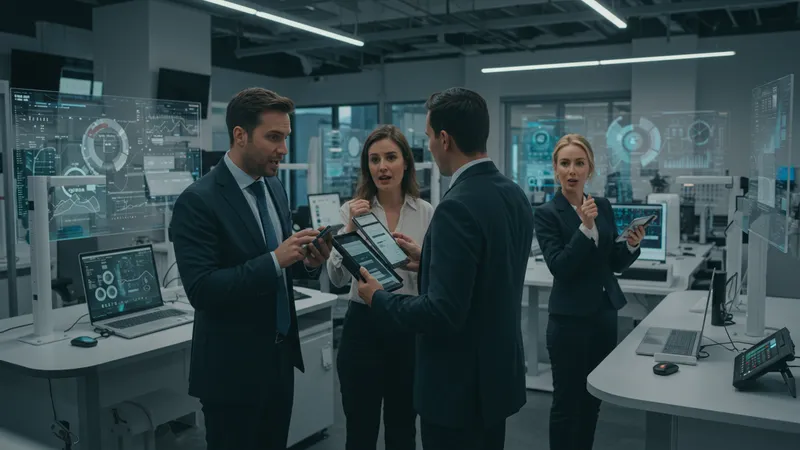
This tech advantage significantly boosts productivity and operational efficiency, crucial in competitive markets. Sometimes, the mere upgrade in equipment can halve project completion times, offering firms an edge over competitors. But there’s a catch—understanding the tech options can be overwhelming, leading many into analysis paralysis.
Leasing partners often provide guidance through tech options, helping businesses choose tools that best meet their project requirements. This partnership ensures that companies don't just lease equipment but also gain insights into optimizing machinery use. The synergy between leasing and technology is reshaping the fabric of construction operations. And there’s more innovation unfolding that no one is speaking about yet…
Future tech developments, such as AI integration and IoT enhancements, promise even more transformative results. Equipment is no longer merely a tool; it’s becoming an intelligent assistant on the site, contributing to smart construction workflows. Brace yourself for a revolution—a new frontier in construction is here, and it's wildly more advanced than ever imagined. Stay tuned as the saga continues…
Behind the scenes, financial innovations are making leasing more attractive and accessible. One of the greatest barriers to leasing in the past was the rigid financial structures. Today, however, financial institutions are introducing adaptable leasing plans, with customizable payment terms that cater to a range of business sizes and models.
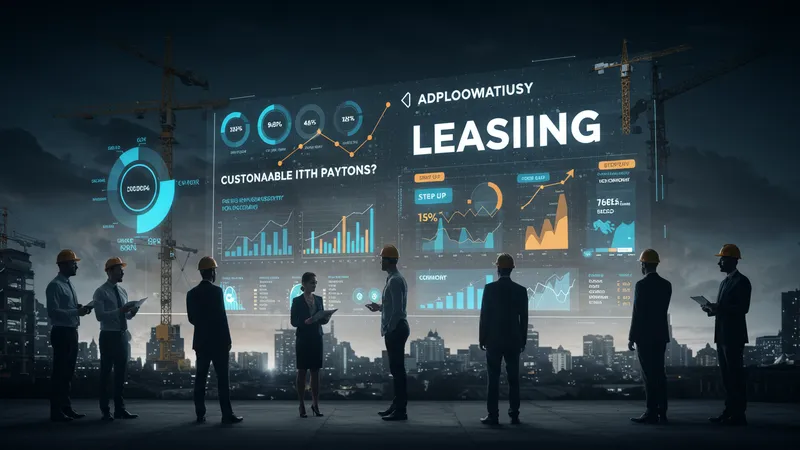
These innovative financing structures often include step-up or step-down payments, based on the cyclical nature of the construction industry, making the burdens of financial commitments a thing of the past. This adaptability allows even smaller companies to leverage leasing and compete alongside industry giants. The evolution of these financial products is opening new doors…
Additionally, there are now more options for co-leasing agreements, where companies come together to share equipment and cost, creating a collaborative environment that was unheard of a decade ago. Such financial models not only amplify access to necessary machinery but resurrect the spirit of community and partnership in business ventures. What does this mean for competition? Let's just say it levels the playing field dramatically.
The ripple effect of these new financing structures is profound. It stimulates the growth of the industry, particularly benefitting those keen on innovation but constrained by traditional financial limitations. There’s more to uncover in the world of financial revolution, and what’s next could empower your business in unimaginable ways. Are you ready to discover how this transforms everything?
Focusing on the legal aspects of leasing can unearth crucial elements that often go unnoticed. It's essential for businesses to comprehend the legal frameworks governing leasing contracts. Notably, these agreements often outline crucial stipulations concerning usage, responsibilities, and liabilities.

There’s a hidden complexity in ensuring compliance with local regulations and international laws, particularly for companies operating on multi-national projects. Ensuring these legal considerations are meticulously understood and documented can significantly impact the success or failure of construction ventures. But there's more at stake than just compliance.
Engaging with legal experts can uncover opportunities for negotiation within contracts, offering tailored terms that suit specific business requirements. Often, enterprises can secure favorable clauses protecting them from unforeseen circumstances. Such insights can mark the difference between mere participation and outright success in the leasing market. It doesn't stop there, however.
Dynamic changes in legislation may also arise, influenced by economic policies and technological evolution. Adapting to these shifts ensures long-term growth and competitiveness. What's written in these lines can ultimately shape business trajectories, positioning them better in a fast-evolving industry. Now explore how these legal intricacies deepen further and increasingly matter more than ever.
Understanding future trends in equipment leasing is key to staying ahead in the game. Analysts predict that technology-enhanced, eco-friendly, and financially innovative leasing models will become industry standard over the next few years. The pace of industry adaptation is rapidly accelerating.

This foresight is critical as businesses carve out their niches, ensuring they remain relevant and competitive. Recognizing these emerging patterns empowers companies to make informed decisions, structuring their strategies around predicted shifts powerfully. And guess what makes this even more pertinent?
The construction industry's globalization adds another layer of complexity to trend forecasting. As companies expand operations across borders, they must be prepared for regulatory changes and evolving market demands. The strategic anticipation of these variations will safeguard against disruptions and maximize business potential. But there's more on the horizon.
The most significant anticipatory move involves preparing for completely autonomous construction sites powered by AI and IoT. While they might sound like a futuristic fantasy, experts agree they are only a few years away from being a primary method. What we view as groundbreaking today could quickly become obsolete. Are you prepared to harness the future and ensure your venture’s relevance? This journey into what's possible continues intriguingly.
Leveraging insider knowledge can amplify the benefits derived from leasing agreements significantly. One crucial tip is to nurture strong relationships with leasing providers. Such alliances often provide access to additional benefits, such as preferential rates or access to beta technology.

Another strategy is to adopt a comprehensive evaluation approach toward leasing offers. Evaluating providers based on reputation, past client feedback, and service offerings can yield valuable insights, ensuring that businesses make the most advantageous selections possible. This can also expose previously unseen opportunities within lease agreements. What's the next crucial element?
Timing is everything in leasing. Understanding market cycles and planning leasing agreements when demand is lower can result in substantial cost savings. Moreover, engaging in periodic market assessments and staying updated about evolving leasing norms keeps businesses proactive rather than reactive. But there’s still one more facet to uncover.
Finally, businesses should not underestimate the value of legal advice. Consulting with legal professionals ensures that agreements are not only beneficial but safeguard the company against potential pitfalls. Equipped with these insights, businesses can maximize the advantages of leasing, propelling them toward sustained success. Ready to put these strategies into practice and see transformative results? Here's how to unfold their power further.
The narrative deeper inside success stories isn’t merely about who leased what but about strategic decision-making that turned potential disadvantages into undeniable strengths. One particularly compelling case involves a mid-sized company that transitioned to a full leasing model six years ago, doubling its growth in the process.

This transition allowed them to avoid hefty capital layouts and instead channel funds into research and development. The result was an innovative hub that birthed award-winning design solutions, truly setting them apart from industry competitors. But it's not just this firm that echoes the leasing benefits.
Another company faced crippling equipment failure during a pivotal project but sidestepped disaster entirely due to their comprehensive leasing agreement’s maintenance package, instantly mitigating the issue at no additional cost. This turn of events highlighted a crucial leasing advantage at a moment when stakes were highest. Wait, there's more.
Stories like these shine a light on the often under-emphasized potential embedded in leasing options. Far from a restriction, these agreements empower companies, facilitating not only survival but incredible success amid fierce competition. Are your strategies ready to incorporate these insights for unparalleled growth? Discover more on how industry leaders did just that.
In the world of equipment leasing, misconceptions abound. A widespread myth is that leasing over time exceeds the cost of purchasing machinery upfront. However, a deeper look often reveals that thoughtful lease agreements provide extensive savings and expertise that far outweigh supposed cost disadvantages.
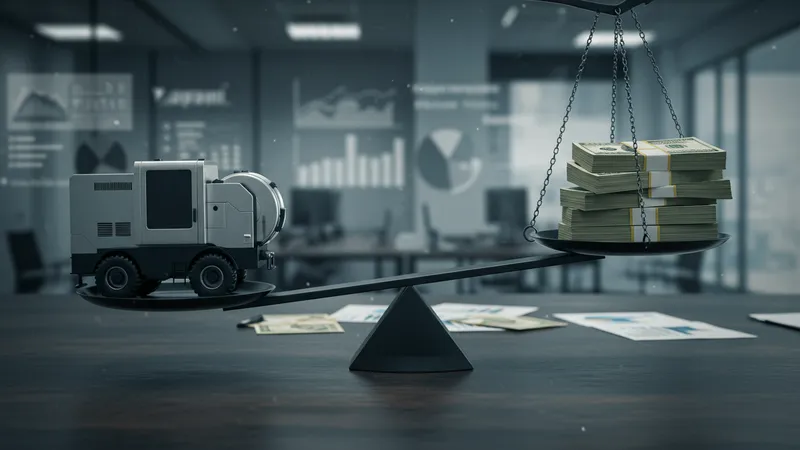
Another misconception is the perceived inflexibility within lease terms. On the contrary, customizable pay-as-you-go options allow for superior adaptability compared to outright purchases, frequently misaligned with operational shifts and emergent needs. But what else among these myths demands clarity?
Perhaps ignorance ranks equally—as companies overlook tax advantages inherent in leasing, miss opportunities for asset recycling, and dismiss the inherent risks in upfront capital outlays. This limited scope of consideration can negatively impact potential growth, all due to misunderstood and unchallenged biases. Curious about another paradigm-smashing discovery?
Most of all, the assumption that leasing offers less control is simply untrue. Leases increasingly offer customization conducive to businesses’ precise operational needs, balancing usage choices while outsourcing non-core activities like maintenance. It’s time to dismantle these misconceptions and unlock the potential hidden within this powerhouse sector. Discover how recognizing these facets can revolutionize your business strategy—it’s so close, yet vastly underutilized.
The propensity towards leasing over purchasing has seen a marked acceleration in recent years. As companies shift focus to flexibility, the agility afforded by leasing options becomes a natural preference—a pivot that has left many competitors reeling.
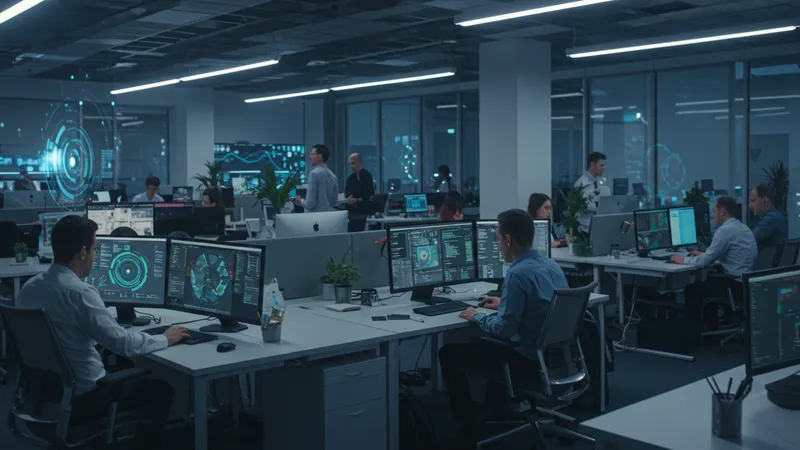
Fueling this shift is the acceleration of project cycles, requiring quick access to the latest technology without the long-term financial obligation of ownership. Leasing provides that bridge, supporting more projects with fewer resources allocated to asset management. Have you seen this elsewhere?
Moreover, evolving consumer expectations demand rapid adaptability; leasing answers by eliminating the depreciative liability of owned equipment—freeing capital for innovation and enabling sharper competitive capabilities. This response to shifting demands underpins commercial evolution itself, but there's a deeper layer of the strategic pivot clients undertake.
An undercurrent fostering this exponential rise involves corporate sustainability commitments—leasing allows companies to trial innovative approaches without the burden of ownership; it's a pivot designed to evolve a business model on the precipice of major change. How organizations embrace these tactics could define the next industry leader. Are your strategies aligned to navigate the unfolding market landscape?
Peering into what lies ahead reveals an astonishing possibility for those willing to venture forward. Imagine entire job sites operating autonomously—equipment self-maneuvering, collaborating in real-time via AI, based on dynamic project demands. A realm where predictive analytics manages maintenance before it disrupts operations.
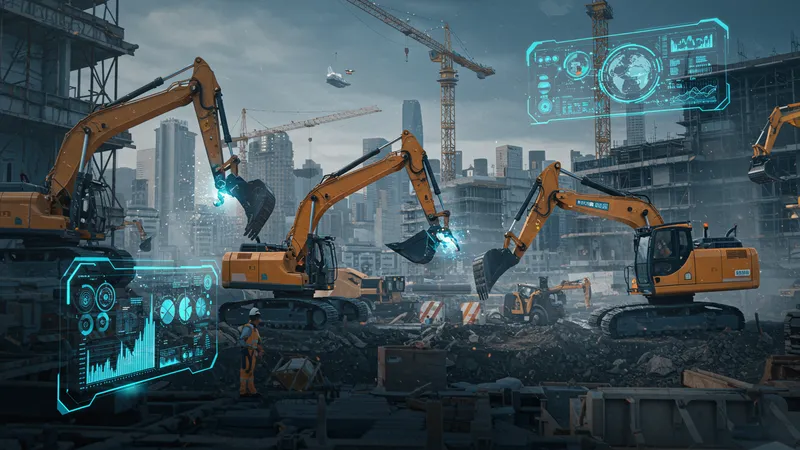
This transformation isn’t as distant as some might perceive. The rapid advancement in AI and robotics embeds within leasing agreements could soon turn speculative ventures into industry norms—redefining machinery utility and augmenting productivity exponentially. Curious about how close you are to encountering these revolutionary changes firsthand?
Even more pressing is the profound recalibration of human roles, from manual oversight to strategic innovation, as teams harness technology for unprecedented creativity and expansion. A leap that doesn’t just embrace the future but propels industries beyond known limits—a groundbreaking passage fundamentally transforming expectations.
These developments embody more than technological enhancements, they signal an era of intelligent collaboration; a world where leasing equipment isn't merely a means to an end but a catalyst for ingenuity within construction's evolutionary journey. Are you primed to pioneer this tomorrow—it's sooner than you think. This remarkable future is fast approaching, ready to be embraced.
The final point of understanding bears the critical importance of readiness to adapt. As leasing paradigms shift, opportunities for growth, ingenuity, and transformation flourish for those prepared to seize them. Be proactive; let innovation drive your business and anticipate the unfolding potential in leasing.
Act now—review your current machinery strategies, investigate leasing options, and partner with industry leaders to gain competitive traction. By forging the path forward, your company stands at the forefront of construction innovation—an unstoppable force in shaping future industry benchmarks. Share this journey with peers; every step forward magnifies impact exponentially. Embrace the future today!